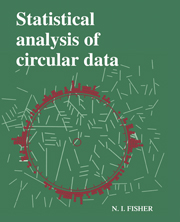Book contents
- Frontmatter
- Contents
- Preface to the first paperback edition
- Preface
- 1 Introduction
- 2 Descriptive methods
- 3 Models
- 4 Analysis of a single sample of data
- 5 Analysis of two or more samples, and of other experimental layouts
- 6 Correlation and regression
- 7 Analysis of data with temporal or spatial structure
- 8 Some modern statistical techniques for testing and estimation
- Appendix A Tables
- Appendix B Data sets
- References
- Index
1 - Introduction
Published online by Cambridge University Press: 03 May 2011
- Frontmatter
- Contents
- Preface to the first paperback edition
- Preface
- 1 Introduction
- 2 Descriptive methods
- 3 Models
- 4 Analysis of a single sample of data
- 5 Analysis of two or more samples, and of other experimental layouts
- 6 Correlation and regression
- 7 Analysis of data with temporal or spatial structure
- 8 Some modern statistical techniques for testing and estimation
- Appendix A Tables
- Appendix B Data sets
- References
- Index
Summary
Circular data analysis is a curious byway of Statistics, sitting as it does somewhere between the analysis of linear data and the analysis of spherical data.
For one thing, various aspects of the subject seem trivial in comparison. A sample of linear data can be so disposed as a collection of clusters, long tails, inliers and outliers over an indefinitely large interval of the real line that no single display shows all features. A sample of spherical data can be so dispersed over the surface of the unit sphere as modal groups, transitional modal-girdle patterns and outliers that it can really only be viewed satisfactorily using a rotating three-dimensional display. By contrast, circular data cannot escape very far from each other (the notion of an outlier is of little consequence in most practical situations) and certainly cannot hide from view. So, many of the basic problems addressed in the exploratory phase of linear or spherical data analysis seem benign or non-existent for circular data.
For another, the problem of extracting practical information from circular data would appear to be tantalisingly close to the same problem for linear data, especially for concentrated data sets (i.e. data sets contained in a small arc of the circle). Approximate linearity of a small arc would seem to justify application of linear methods and so make special treatment of circular data largely unnecessary.
Information
- Type
- Chapter
- Information
- Statistical Analysis of Circular Data , pp. 1 - 14Publisher: Cambridge University PressPrint publication year: 1993
Accessibility standard: Unknown
Why this information is here
This section outlines the accessibility features of this content - including support for screen readers, full keyboard navigation and high-contrast display options. This may not be relevant for you.Accessibility Information
- 3
- Cited by
